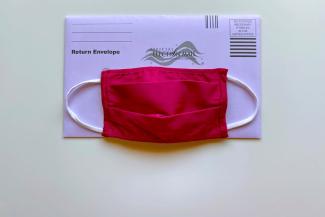
October Newsletter
Despite a disappointing performance in September - what September has historically become known for - the U.S. equity markets posted solid returns for the 3rd quarter of 2020. With gains being made in employment growth and consumer sentiment, the Dow and S&P 500 gained 8.22% and 8.93%, respectively. Large cap technology continued to drive the NASDAQ that finished the quarter up 11.24%. But even with these handsome gains, the Dow remained negative for 2020 as of the end of September.
Although we enter the 4th quarter of 2020 with good momentum in the U.S. equity markets, we see three risks facing the investment markets and the investor – health, economic and political.
Even as the number of new COVID cases has started to rise again, the number of active cases remains stable. Using the active cases as a base to measure growth, however, indicates that the acceleration in the daily growth rate is faster—up from 1.6 percent the last week of September to 2.1 percent the first week of October - suggesting risks are rising faster than indicated by the growth rate based on total cases. Looking forward, the question is whether current conditions will continue into the fall.
While the medical risks are rising, the economy overall has shown signs of improvement. The job market continues to show slower improvement, but recent consumer confidence and spending (a major component of gross domestic product – GDP) reports are more positive. Consumer confidence has improved from post-pandemic lows, and consumer spending has returned to a positive trend.
In addition to the improvement in the consumer economy, the business sector continues to do well. Business confidence and investment are largely back to pre-pandemic levels. The real question, going forward, is how durable this recovery is. Much of the recovery so far has been based on the spending power generated by the federal extension of unemployment benefits. If we do not get an additional stimulus package out of Washington, that is likely to become a drag on the economic recovery.
With only a few weeks before the presidential election, the political winds are blowing. Many investors have expressed the fear of a rapid, short-term decline in the U.S. equity markets as a result of the election. While it is widely believed the markets are currently in a secular (long-term) bull market, a cyclical (short-term) bear market is very possible. But we have gone through cyclical bear markets before – one on the 4th quarter of 2018 and another in February/March 2020 – and the markets have bounced right back.
Perhaps most feared by investors is the potential for legal wrangling after election night. The infamous “hanging chad” incident in Florida following the 2000 presidential election saw the S&P 500 decline 8% before it came to its conclusion. The investment markets do not like uncertainty, and there is plenty of uncertainty swirling around this election.

